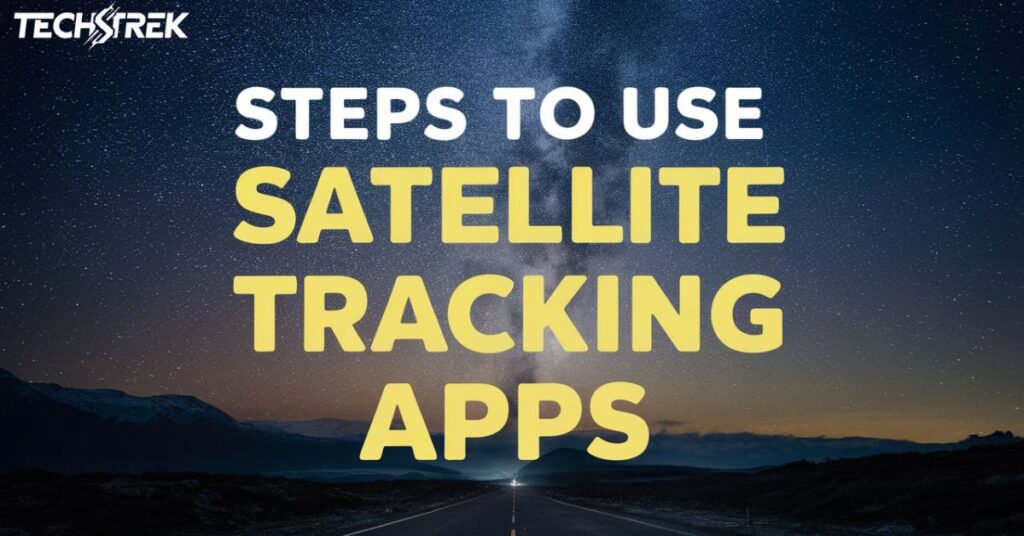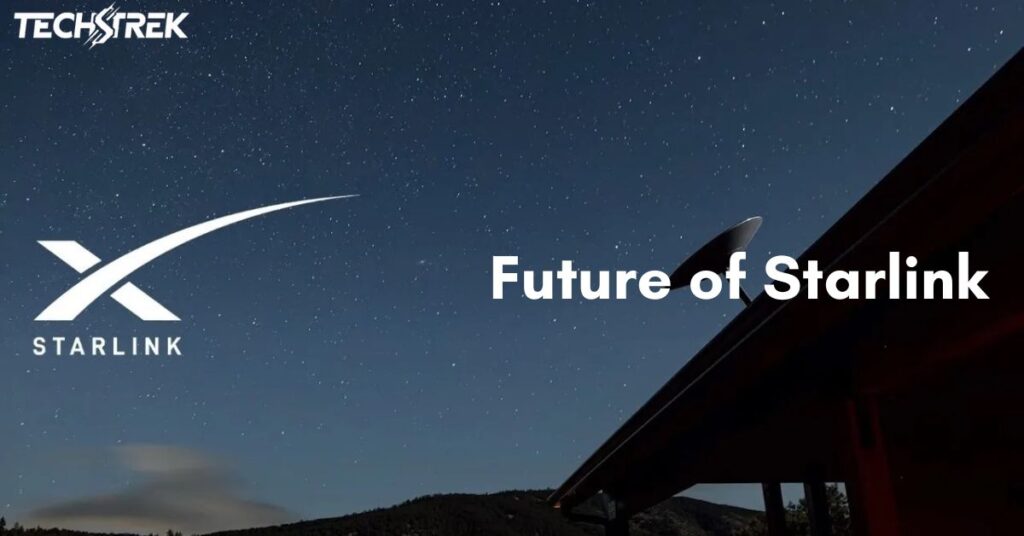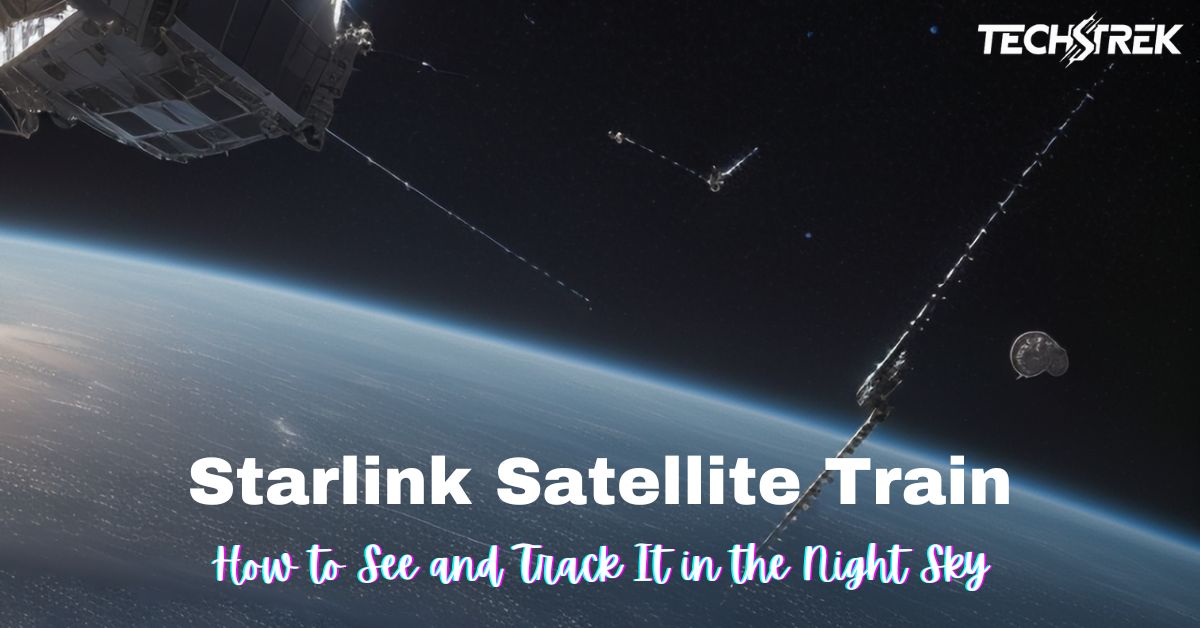Starlink satellites are small spacecraft that orbit Earth. They provide the internet to people all over the world. These satellites often fly in a line, looking like a train of lights in the sky.
Many people enjoy watching the Starlink train move across the night sky. It’s an amazing sight that connects us to space technology. Seeing these satellites can be a fun and educational experience.
This article will help you find and watch the Starlink satellite train. We’ll explain what they are, how to spot them, and share tips for the best viewing. Let’s explore this fascinating space phenomenon together!
What Are Starlink Satellites?
Starlink is a project by SpaceX, a company that builds rockets and spacecraft. They want to give internet access to everyone on Earth, even in remote places. To do this, they’re putting thousands of small satellites into orbit around our planet.
These satellites work together to beam internet signals back to Earth. They fly much closer to us than traditional communication satellites. This makes the internet faster and more responsive for users on the ground.
Each Starlink satellite is about the size of a table. They have solar panels that catch sunlight for power. The satellites also have special equipment to send and receive internet signals.
The Starlink Satellite Train
When SpaceX launches Starlink satellites, they don’t spread out right away. Instead, they fly in a tight line, one after another. This is what we call the Starlink train. It looks like a string of pearls moving across the night sky.
The train is most visible right after a launch. At this time, the satellites are still close together. They reflect sunlight, making them easy to see from Earth. It’s a striking sight that has caught the attention of sky watchers worldwide.
Over time, the satellites spread out. They move to their final positions in orbit. This means the train breaks up and becomes harder to see. But for a few days after each launch, you can spot this amazing space parade.
How to See Starlink Satellites
Seeing the Starlink train takes a bit of planning. The best time to look is just after sunset or before sunrise. This is when it’s dark where you are, but the satellites are still lit by the sun. They shine like moving stars against the night sky.
You don’t need any special equipment to see Starlink satellites. Your eyes are enough! But a pair of binoculars can make the view even better. Find a dark place away from city lights for the best experience.
To know when to look, you can use special websites or apps. These tools tell you when the satellites will pass over your location. They also show you where to look in the sky. With a little preparation, you’ll be ready for an amazing light show!
Tools for Tracking Starlink
There are several helpful tools for finding Starlink satellites:
- Heavens-Above website
- FindStarlink.com
- Satellite Tracker app
- Sky Tonight app
- Star Walk 2 app
Steps to Use Satellite Tracking Apps

Using Satellite Tracker App
Open the app and look for the satellite icon. Tap it and choose “All” from the list. Scroll down until you see “SpaceX’s Starlink.” Pick the launch you want to see. Tap “Track” next to the satellites you’re interested in. The app will then guide you to find them in the sky.
Using Sky Tonight App
In Sky Tonight, use the search feature to look for “Starlink.” Choose the group of satellites you want to see. The app will show you where they are on a sky map. It also gives you an arrow to follow, pointing to the satellites’ location in the real sky.
Using Star Walk 2 App
Tap the magnifying glass in Star Walk 2. Then tap the satellite icon at the bottom. Look for recent Starlink launches at the top of the “Main Satellites” list. For more details, scroll to “SpaceX’s Starlink” and tap on a specific mission.
Using Websites for Tracking
Many websites can help you track Starlink. They often have maps showing where satellites are right now. Some let you enter your location to get custom viewing times. These sites are great for planning when to go outside and look.
Tips for Better Viewing
For the best view, find a dark place away from city lights. Check the weather forecast for clear skies. Be patient and give your eyes time to adjust to the darkness. Remember, the satellites move quickly, so be ready to look as soon as they appear.
Understanding Starlink Orbits
Starlink satellites orbit about 550 kilometers (340 miles) above Earth. This is much lower than many other satellites. Their low orbit is why they can provide fast internet. It also makes them easier to see from the ground.
These satellites move very fast. They circle the Earth about every 90 minutes. This quick movement is why they appear as a moving line of lights. It’s also why they’re only visible for a short time during each pass.
As time passes, the satellites spread out in their orbit. They form a network around the whole planet. This network is how they can provide internet to so many places on Earth.
Impact on Astronomy
The Starlink project has raised concerns among astronomers. With so many bright satellites in the sky, it can be harder to study space. The reflections from Starlink satellites can interfere with telescope images.
SpaceX has been working on solutions to this problem. They’ve tried making the satellites less reflective. Some newer Starlinks have special sunshades to reduce their brightness. These efforts aim to balance the need for a global internet with the importance of astronomy.
Astronomers and SpaceX continue to work together on this issue. They’re trying to find ways for Starlink and science to coexist in the night sky. It’s an ongoing challenge as more satellites are launched.
Photographing the Starlink Train
Taking pictures of the Starlink train can be exciting. You’ll need a camera that can take long-exposure photos. This means the camera’s shutter stays open for several seconds. During this time, it captures the movement of the satellites across the sky.
A tripod is very important for this kind of photography. It keeps your camera steady during the long exposure. Without it, your pictures might be blurry. Point your camera at the part of the sky where the satellites will appear.
Experiment with different exposure times. Start with about 5 to 10 seconds and adjust as needed. The goal is to capture the satellites as streaks of light across your image. It might take a few tries, but the results can be very rewarding!
Starlink’s Global Impact
| Aspect | Impact |
| Internet Access | Provides high-speed internet to remote areas |
| Digital Divide | Helps reduce gap between connected and unconnected regions |
| Education | Enables online learning in previously unreached places |
| Emergency Response | Offers quick internet setup in disaster zones |
| Economic Growth | Supports business and innovation in rural areas |
Future of Starlink

SpaceX plans to launch thousands more Starlink satellites. This will expand coverage to more parts of the world. It will also make the service faster and more reliable. As the network grows, more people will be able to use Starlink internet.
The company is also working on improving the satellites. Future versions might be even less visible in the night sky. They could have better internet capabilities too. This ongoing development aims to make the service better while addressing concerns.
As Starlink expands, it might change how we think about internet access. It could bring high-speed connections to places that never had them before. This could have big effects on education, business, and communication around the world.
Read this article: Stars-923 Depth Look The Stellar Phenomenon
Starlink and Space Exploration
Starlink isn’t just about the internet on Earth. SpaceX sees it as a step towards bigger space goals. The money from Starlink could help fund other space projects. This includes plans to send people to Mars and beyond.
The technology used in Starlink might also help with future space missions. It could be used for communication between planets. Imagine astronauts on Mars using a version of Starlink to talk to Earth!
By making space technology more common, Starlink might inspire more interest in space. This could lead to new discoveries and advancements. It’s an exciting time for space enthusiasts and internet users alike.
Environmental Considerations
The growing number of satellites in orbit raises some environmental questions. Scientists are studying how these satellites affect the space environment. They want to make sure we use space in a responsible way.
One concern is space debris. As more satellites go up, there’s a higher risk of collisions. This could create more space junk, which is dangerous for other satellites and spacecraft. SpaceX has plans to safely remove old Starlink satellites from orbit.
Another issue is the effect on Earth’s atmosphere. When satellites re-enter the atmosphere, they burn up. With many satellites doing this over time, scientists want to understand if this has any long-term effects on our planet.
How You Can Get Involved
Watching Starlink satellites can be a gateway to broader space interests. Many amateur astronomers started by looking for satellites. You might find yourself curious about other objects in the night sky too.
Consider joining a local astronomy club. These groups often have star parties where you can learn more. They might have telescopes you can use to see other space objects. It’s a great way to meet people who share your interest in the sky.
You can also contribute to citizen science projects. Some researchers ask for help tracking satellites. By sharing your observations, you can help scientists study how satellites move and behave in orbit.
Starlink for Different Users

Casual Sky Watchers
For people who just enjoy looking at the night sky, Starlink offers an interesting new sight. It’s easy to spot and doesn’t require any special equipment. This makes it a fun activity for families or anyone curious about space.
Amateur Astronomers
Serious sky watchers might have mixed feelings about Starlink. While it’s an impressive sight, it can interfere with observing other objects. Many amateur astronomers are finding ways to work around the satellites in their observations.
Professional Scientists
For professional astronomers, Starlink presents challenges. They’re working with SpaceX to minimize the impact on research. At the same time, some scientists are finding new ways to study and use the Starlink network in their work.
Quick Facts About Starlink
- Starlink satellites orbit about 550 km above Earth
- Each satellite is about the size of a table
- SpaceX plans to launch thousands of these satellites
- The “train” is most visible right after a launch
- Starlink aims to provide global internet coverage
Final Words
The Starlink satellite train is a fascinating part of our modern night sky. It represents a big step in bringing the internet to the whole world. Watching these satellites can be a fun and educational experience for anyone interested in space.
As Starlink continues to grow, it will likely become an even more common sight. This project shows how space technology is becoming a bigger part of our daily lives. It’s an exciting time to be a sky watcher and to see these changes happening.
Whether you’re a casual observer or a serious space enthusiast, Starlink offers something interesting to see. By learning how to spot and track these satellites, you’re connecting with cutting-edge space technology right from your backyard.
Frequently Asked Questions
How often can I see the Starlink train?
You can see it most clearly for a few days after a launch. Launches happen every few weeks.
Do I need a telescope to see Starlink satellites?
No, you can see them with your naked eye. Binoculars can give a better view.
How long does a Starlink pass last?
A typical pass lasts about 5 to 10 minutes. The exact time varies based on your location.
Are Starlink satellites visible during the day?
No, they’re only visible at night when they reflect sunlight. Look just after sunset or before sunrise.
Can Starlink satellites see me?
No, these satellites don’t have cameras. They’re designed to transmit internet signals, not take pictures.








